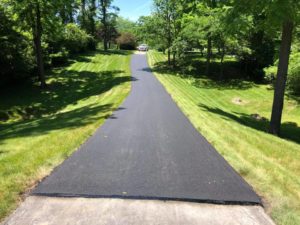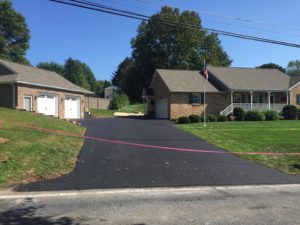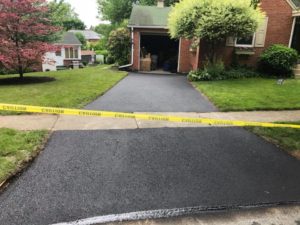New Homeowner Driveway Repair Options and Replacement for Asphalt Driveway
Is your driveway a royal mess?
You may have cracks and holes, or it keeps falling to pieces.
You may need to start over and rebuild your driveway. But wait just a second.
There is no need to go all the way to completely reinstalling your driveway.
We are here to guide you on improving in every aspect, both as an individual looking to prosper in the future or as a group. Please visit our sites to learn more about how you can be one of the best in your expertise. We are looking to train individuals on how to get self-reliant and make them grow as professionals. Don’t be left out.
In this article, we will teach you some of the fundamental principles that go into driveway repairs.
Once you learn what goes into repairing a driveway, you will gain the insights to decide whether to fix it.
Why You Should Try To Repair Your Driveway Instead Of Rebuilding It
Redoing a driveway may not be a highly complex process. After all, it’s just a concrete slab on the floor, or is it?
However, there’s much more going on with your driveway than meets the eye.
For one thing, underneath it all, a proper foundation provides the essential structure and strength to the surface of your driveway on top.
And the foundation is a significant driveway cost factor to consider if it needs to be done. You also want your foundation to be laid to avoid problems later on. So you wouldn’t want to cut on costs by hiring anyone other than a professional to build your foundation.
This is one of the main reasons most people prefer to repair a driveway instead of starting from scratch. It’s the foundation that brings about the most expenses and the accompanying headaches that arise when committing to a project of this scale. In most cases, you can treat a malformed driveway with several improvements.
These repairs will extend the lifetime and durability of your driveway. And you may never have to worry about doing a total reinstall for many years to come. Nor will you have to sell away half the house to do them.
So remember, if you have to dig up the driveway and have it reinstalled, you can expect it to be costly.
However, regardless of the type of driveway you have, if it’s covered in brick paving, asphalt, or concrete – there are many solutions to common problems that can be had for very little investment. And many of these little repairs can be completed by yourself.
For instance, applying professional treatments to cracks in your paving is one problem solved. You will be preventing the damage from spreading. And that’s reasonably affordable. You can now move on to the next issue that needs attention. We will further show you that it’s often better to patch the driveway where you can. Only in extreme cases should you consider a full-on replacement for your driveway.
How Easy It Is To Conduct Basic Asphalt Repair
Concrete driveways or asphalt ones are usually very simple to maintain. They are also conveniently repaired if you possess the skills and the know-how. You can purchase ready-made repair kits for each of these driveways repairs – all of which make maintenance very straightforward and hassle-free. Granted, a bit of work is involved to get the job done.
But you could go the DIY route and save even more money. Hiring a professional will make the final result look and last much longer.
Tips For Repairing Driveway Cracks Filler
The wet and dry spells of weather and surviving through many hot and cold seasons can leave your driveway littered with unsightly cracks and crevices. No matter how strong the driveway is, it has to stand the test of time and take a constant beating from the elements. It also has to withstand the weight and movement of vehicles.
The best remedy for driveway cracks is to perform some patching-up work on the affected areas. More minor damages that are noticeably less than a quarter of an inch mean you still have the hope of patching up to prevent further degradation. Here you could use a variety of liquid-based fillers, which will cover the cracks nicely.
You could do similar patching up for more significant cracks as well. But bear in mind that if the cracks run deeper, this will not solve the long-term problem.
For cracks like these, you should use driveway patching material. This makes the affected area flush with the rest of the driveway’s surface and is stronger than the basic liquid fillers.
Patching is usually a very effective first step driveway that needs repairs, saving time and money until more severe problems arise. For instance, if you have potholes developing in your driveway, patching will obviously be useless. Either you must fill these up with concrete or consider resurfacing the driveway.
Some driveways this week Lewisberry pa
If You Need To Resurface Your Driveway
Remember resurfacing a driveway is yet different from installing a new one. Once you are convinced patching will not work to fix your driveway, resurfacing fits as the next stage of driveway repair you should consider.
Resurfacing involves stripping away the upper surface of your driveway and then replacing or re-plastering, or re-paving it as required. This avoids you having to dig all the way to the foundation – which will still prove more expensive than this remedy.
When done correctly, the beauty of a resurfacing treatment is that it makes your driveway appear instantly brand new. Even though you will know the secret and the amount of money, you saved. Many of your friends will think you had the entire driveway rebuilt. So resurfacing may serve as the best intermediate solution for your driveway repairs. But remember that if underlying issues are going on with your foundation, resurfacing will not address them. If there are problems with the foundation, then at that stage, you will have little option but to have it reinstalled.
How To Reseal Your Driveway – A Step By Step DIY Guide
Here’s a simple but effective project you can do yourself or even with your friends’ help, which will add many years of durability to your driveway.
Firstly, ensure there’s no rain on the weather forecasts for a few days. You’re going to need dry weather for this method to work.
Expert driveway maintenance specialists in Harrisburg, Pennsylvania, often use this methodology.
Do a complete cleanup of your driveway.
Get rid of all the dirt, rubble, and dried leaves from the surface of your driveway. You can use a broom, that’s fine, but a leaf blower helps remove dust and tiny pebbles even better.
You will also want to pull out all the weeds and grasses that have found their way through the surface of your driveway.
If you have moss anywhere on the driveway, get rid of it with a pressure washer. It would be best to treat shaded areas of the driveway because this is where moss grows. Another way to get rid of moss is to spray it with bleach. Fill an old spray bottle with household bleach, and you’re ready. This also makes it easier to lift sections of moss with a scraper.
And lastly, any oil stains you find can be cleaned with a de-greasing agent. Give the driveway a suitable hose down, washing away all the remaining grit particles. Now let it dry for the next step in our resealing repair job.
Time to patch up those cracks and fill up those holes
Many folks don’t see the need to patch up cracks since they will be using sealant anyway. But we advise taking the trouble to do so because it ensures your final result will be much more hard-wearing and attractive.
Your essential liquid crack filler is ideal for cracks and little holes up to about half an inch wide. It’s also straightforward to use. If you apply too much crack filler by mistake, you can use a scraper to neaten your work.
One key advantage of filling the cracks up in this way, before even jumping to the sealant, is that your driveway will appear perfectly level once you’re complete. The crack filler tends to even out naturally as it dries. You will need about 5 to 8 hours max for your fill to be thoroughly dried.
For your larger cracks and gashes in the driveway, use both patching and tampering to ensure the entire driveway’s surface is fixed. A driveway patch typically requires more time to set and remain strong. So allow a maximum of 6 weeks to complete the process.
You’re now ready to apply the driveway sealant.
You will also prefer absolute dry weather for up to two days. Do a last-minute sweep off the driveway, or use a blower for an even better effect.
Now prepare the sealant as per instructions.
It’s always a good idea to mix up one bucket at a time, complete one with that bucket, and then move on to another.
To ensure each sealant bucket is adequately mixed, turn it upside down for a while and the right way up again. It should now be ready for use, and you can go ahead and pop it open.
Complete the driveway’s cornering in style.
Remember to plan your approach when tackling the whole driveway with sealant. You want to avoid getting stuck in a corner. So it’s best to start where your driveway meets the walls of your garage or house etc., and then work away from there.
An old paintbrush will do the trick to neatly finish those areas where the driveway site is directly adjacent to a wall or corner. Take your time to bring out a professionally finished appearance.
As for the remaining bulk portions of the driveway, you can use a squeegee attached to a broom handle for convenience and speed up the process.
What to do at the edges of your driveway
Edging requires more care and tenacity to be done correctly. Remember that a bucket of sealant may prove very heavy for you to carry around after a while. So be sure not to trip or allow spillages to occur. Spills will spoil all your efforts up to this point.
To finish off the edges of your driveway, use a hand-held squeegee this time. Hold the squeegee at an angle, and apply pressure as you drag the sealant along the edge towards you. This will fill in any gaps and produce a neatly contoured surface that is uniform along the entire perimeter of the driveway. The sealant also appears very similar to the crack filler you used earlier.
You may need to go over certain areas again to bring out the straight-leveled appearance you are trying to achieve. Be sure to attend to any corners where the driveway hits a wall as you’re going along. This will make your completed driveway look professional.
What about a second coat?
Some people will tell you it’s not necessary. But the second coat of sealant will help you to iron out any noticeable discrepancies along the driveway’s surface. It also ensures the surface remains resilient for a much more extended period.
Remember to allow at least 24 hours after applying the driveway sealant. This will apply to both your first and second coats.
Immediately after applying your second and final coat, be especially careful not to allow anyone to walk on the driveway’s surface. It needs a total of 24 hours before it is ready. And for vehicles driving over it, you should be even more particular. A good 72 hours will ensure all your hard work is not wasted. You can create some barriers around the critical areas of the driveway using those empty sealant buckets you now have.
Some driveways we did in Dillsburg and Lisburn.
Time is running out get on the schedule before we are booked for the year
How To Fix Driveway Problems Peculiar To Asphalt Driveways
Asphalt driveways look exceedingly terrible when they have developed horrendous-looking potholes and sinkholes. They’re even messier to fix than, say, a driveway that is covered up in concrete. You could improve your asphalt driveway, but it’s better to consult professionals for the best outcomes.
As long as the problems with your asphalt driveway have yet to reach an advanced stage, you can still get decent results with basic repair techniques. If too many ugly holes spread out over your asphalt driveway, it might be a good time to look at resurfacing.
How To Differentiate Between Potholes, Patch, and Sinkholes In Asphalt
We said it’s more challenging than filling up with concrete. Asphalt usually forms a separate layer that makes up the surface of your driveway. Remember, with an asphalt surface, a pothole indicates that a significant amount of asphalt has been lost. So filling a pothole most often requires other materials besides asphalt.
Potholes are among the driveway issues you cannot afford to ignore. If left unattended, these could eventually result in vast areas of your driveway being torn away. As you’re well aware constant driving over them only worsens the problem.
And you would never guess where those potholes arrived from so mysteriously.
Remember those little cracks in the surface of your driveway? The ones which are so easy to fill and patch up? That’s where all potholes start developing in the first place. Sometimes even within a shorter time than you were expecting.
So it is good to know that the leading cause of potholes is the same as the causes of cracking your asphalt. These are mainly directly on the surface – wear and tear from driving over, as well as the long-term effects of weather and temperature.
More Information On Driveway Paving
One thing you know for sure, once a pothole is created in your driveway, it’s downhill from there. Again, this is because a small pothole almost always turns into a bigger one.
Sinkholes are a different creature of driveway problems you are likely to encounter. These are not caused by elements applying directly to the surface, as we’ve seen with potholes. Instead of sinkholes, the actual causes and problems originate invisibly below the surface of your driveway.
Many times sinkholes can appear out of nowhere. This happens when a section of the ground beneath your driveway gives way to settling, often immediately after a new layer of asphalt has just been laid. One of the causes is the foundation needed to be correctly done, so it is not strong enough to withstand the total weight of the asphalt.
Another reason could be that the asphalt becomes pliable under the extremes of heat and sunlight, seeping into the foundation material below. This causes the foundation to collapse in certain areas, pulling down on the sticky asphalt surface and creating a sinkhole.
At a minimum, you’ll be lucky if minor cracks are the worst result of such a situation. But remember, these are not the usual cracks you find based on external erosion elements. You may eventually still end up with the problem of sinkholes.
My Driveway Surface Is Very Old. Should I Bother Replacing A Driveway?
You can keep repairing and improving your driveway over many years. But eventually, it becomes a case of diminishing returns. It depends on how old your driveway is.
According to driveway experts in Harrisburg, most asphalt driveways can keep going strong for up to 20. Throughout this time, you can get away with patching and filling and even conduct one or two resurfacing projects in between. However, once you get up to 25 years, the structure beneath your driveway will need attention.
So yes, if the age of your driveway is a concern, you may want to give up the repair cycle and make it brand new.
What happens after so many years is that the materials making up your driveway cannot keep on going. They have, after all, weathered against the elements for a long time. At this stage, continued repairs will turn out to be impractical.
How you will know this is that the time between your various repair efforts will keep getting shorter and shorter. The repairs do not hold up anymore.
But remember, sometimes age may not be the only determining factor behind this happening. Your driveway could be just five years old, yet you are experiencing this problem.
Other Reason For Hiring A Contractor
There are other underlying issues that only a professional can identify.
And then there are those folks who feel like repairing or reinstalling their driveway for reasons other than what we have discussed.
Many people are very particular about the aesthetics of their homes and the surrounding area. This includes the appearance of the driveway, which they feel ought to complement the home’s beauty. Either they have endured the wear and tear of a driveway that no longer matches the house, which is well kept, or the driveway has been damaged somehow.
Sometimes it may be the person intending to sell the property. So they feel that the driveway, after many years, could use a revamp. Or even a complete rebuilding if the driveway is in terrible condition.
In such cases, it’s apparent that the driveway would otherwise turn away potential buyers, so the decision to reinstall it serves the greater goal of securing the sale.
If you are in the position to sell your home any time soon, then yes, a brand-new driveway will certainly look more appealing than one with several patches all over it.
This does not necessarily mean that a new driveway will somehow inflate the value of your property. Keep this in mind yet again because installing a driveway almost always proves to be a costly undertaking.
So the expenses involved in rebuilding will not automatically be made back in part even though you’re selling the property as a whole.
Do Asphalt Driveway Repair Right
Due to wear and tear, an asphalt parkway can develop problems over the years. Some likely issues to crop up include cracks, holes, crumbling edges, and depression. Does this then raise the question of an asphalt driveway to be repaired?
Cracks
Cracks are the most typical problem that affects this material. It is best to handle cracks while still small so that the situation does not worsen.
Clean the crack first and get rid of any loose dirt. Use a sharp object to dislodge any loose objects. Then hose it down with a hosepipe. Pull out any weeds and then apply a weedkiller. Use a filler to fix the crack.
Resurfacing
The best thing to do in this situation is to resurface the parkway. If you have many cracks and holes or deep holes, filling them all up is not a very practical option. Besides, it will need to look more neat.
This involves digging up the affected area and then surfacing it again. This is a more complex solution but long-lasting and results in a flat, smooth surface.
Depression
Also known as a dip, it tends to fill up with rainwater when it rains. To fix it, first, clean up the drop. They fill it up, tamp it, and then dry it.
Crumbling Edges
The edges of the parkway tend to break down over time. This can result in a messy look.
To fix it, first, clean it up and get rid of any dirt or vegetation that might get in the way. Then fill up the edge with a cold patch product and tamp it down.
Conclusion
It is best to hire an experienced contractor to handle the issues. This is good, especially if there is extensive work that needs to be done.
In most cases you can expect to be charged $2.25 per square foot for resurfacing a driveway. A standard driveway repair for a 750 square foot driveway would cost $1,687.
Replacing a driveway can be expensive. On average replacing or resurfacing asphalt can range from $2,850 and $6300.
Yes, a beautiful looking driveway will most certainly increase the value of a home. Asphalt driveway help boost curb appeal to all home. How much does it cost to repair a driveway?
How much does it cost to replace an asphalt driveway?
Will a new driveway increase home value?





